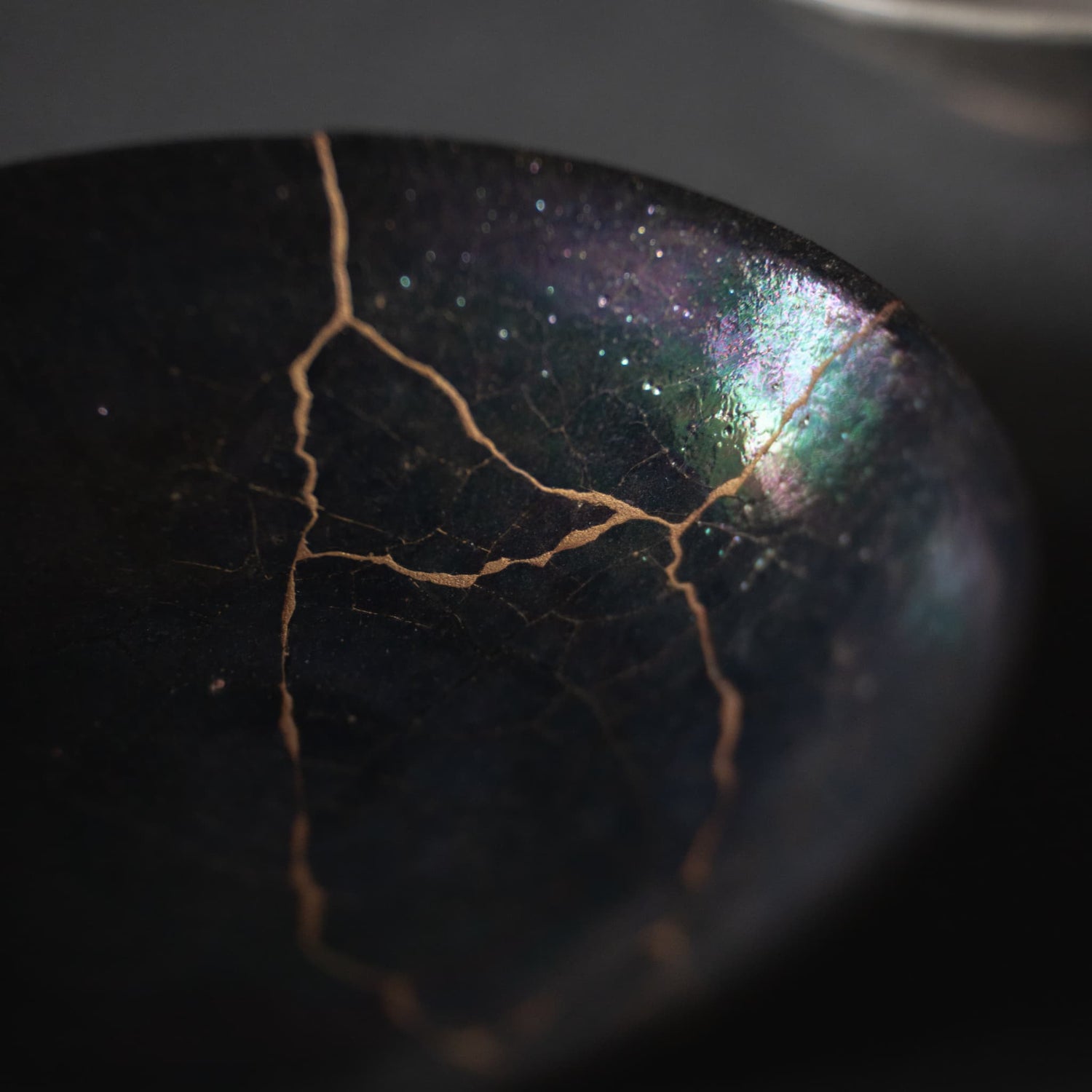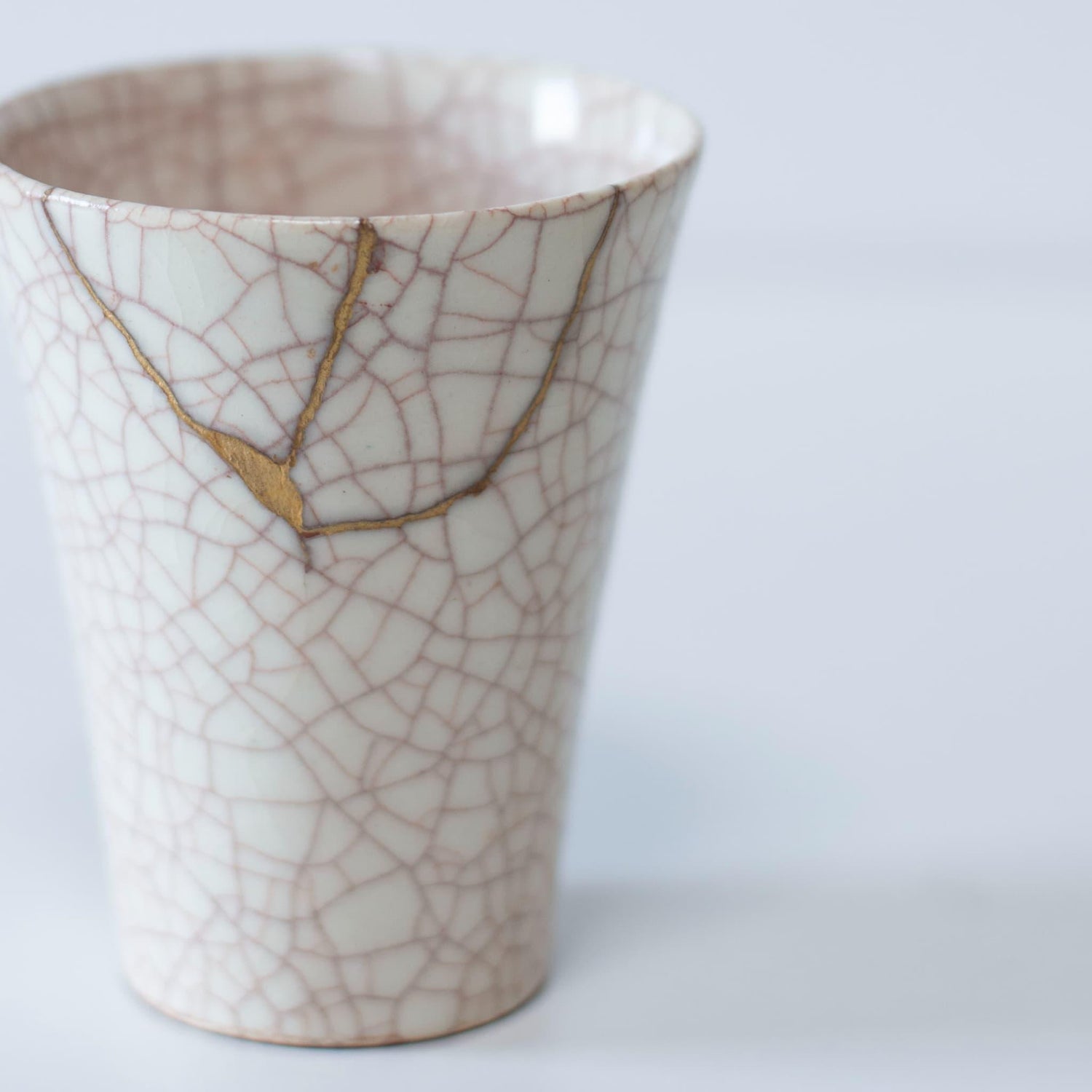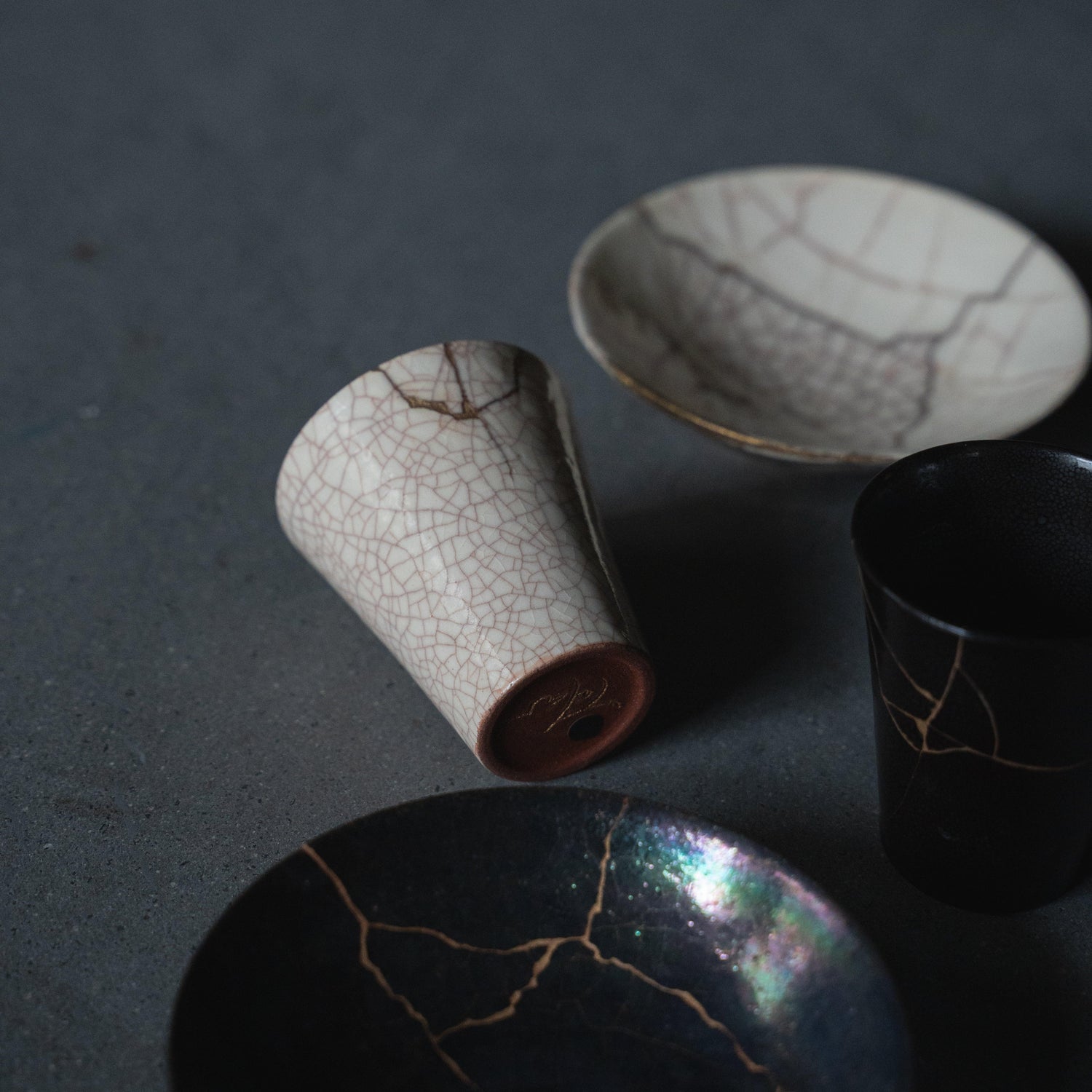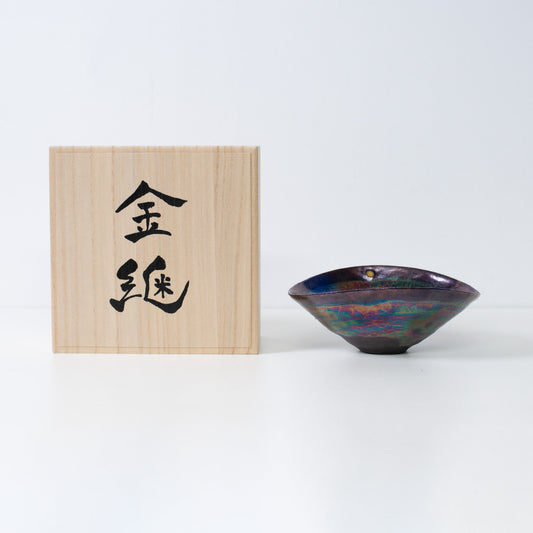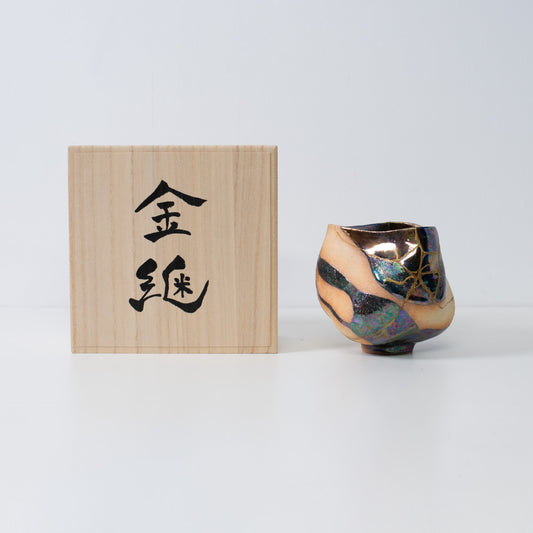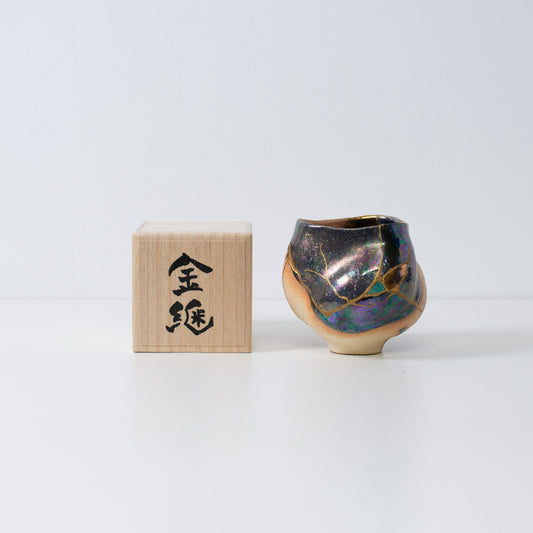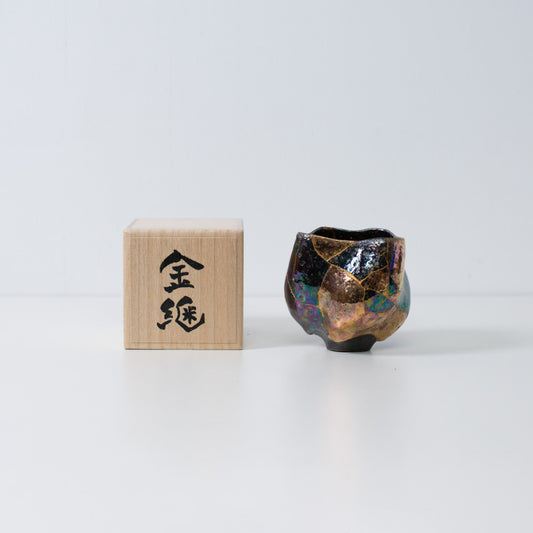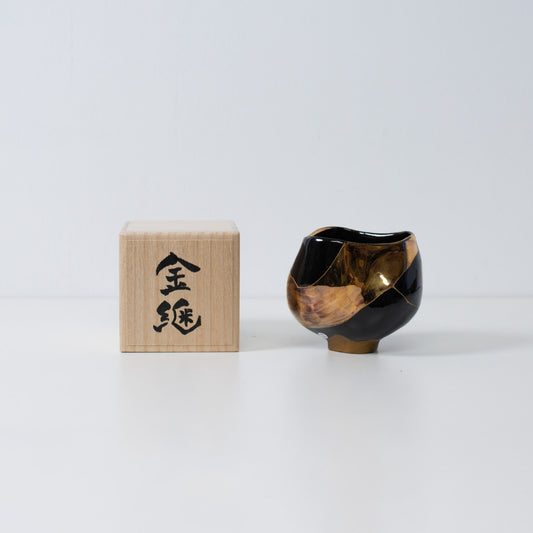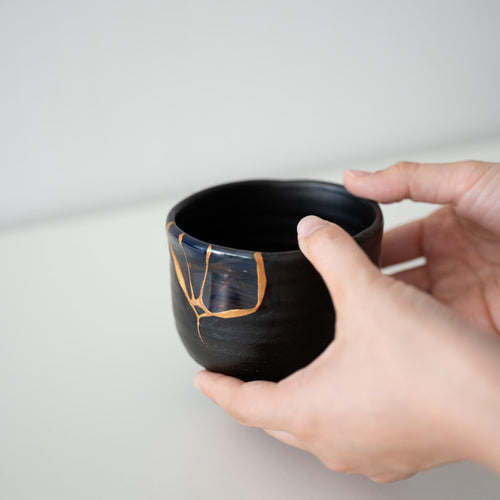
Kintsugi: The Art of Golden Repair | Meaning & Gifts
Share
In the heart of Japan's vibrant traditions lies the art of Kintsugi, a practice that not only repairs but transforms the broken into the breathtakingly beautiful. This ancient technique, which uses gold, silver, or platinum to mend fractured ceramics, is more than a mere restoration—it's a celebration of life's imperfections. Kintsugi gifts, therefore, carry profound meanings, symbolizing resilience, recovery, and the preciousness of embracing flaws. Through the eyes of Taku Nakano, a renowned kintsugi master based in Tokyo's Omotesando, we delve into how this art form transcends its aesthetic appeal, offering deep emotional connections and a unique perspective on beauty and imperfection. Whether as a token of reconciliation, a symbol of overcoming adversity, or a testament to enduring love, kintsugi gifts represent a poignant intersection of tradition and personal narrative, making them an unparalleled gesture of meaning in a world that often overlooks the beauty in the broken.
Table of contents
The Art of Kintsugi: A Japanese Tradition
Kintsugi is a traditional Japanese art and technique that repairs broken or chipped ceramics with lacquer and then embellishes them with gold, silver, or platinum powder. This technique is not just about repairing broken objects but finding beauty in their history and imperfections, elevating them to a form of art. This philosophy is deeply connected to the Japanese aesthetic of "wabi-sabi," which embraces the beauty in imperfection and the natural cycle of growth and decay.
Meet Kintsugi Master: Taku Nakano
Taku Nakano, a ceramist based in Tokyo's Minami Aoyama Omotesando, is a kintsugi master with over 2,000 students, including celebrities. Nakano creates unique, one-of-a-kind pieces using rare materials in the world of pottery such as pure gold, platinum, titanium, saidei (colored clay) luster, and retsu (crack) techniques, inspired by the mesmerizing events and celestial bodies of the vast universe. His Kintsugi work embodies the philosophy symbolized by kintsugi, such as "stronger and more beautiful than before the break" and "second chances in objects and in life," continuing to create one-of-a-kind kintsugi pieces with a unique worldview.
Kintsugi as a Gift: Symbolism and Meaning
Japan, a country prone to natural disasters like earthquakes, typhoons, tsunamis, floods, fires, epidemics, and famines, has a history of resilience and rebirth from ashes. This has cultivated a philosophy that respects overcoming adversity and emerging stronger and more beautiful. Nakano's kintsugi works attract people who wish to link this philosophy with significant moments in their lives, such as gifting to a friend who has recovered from a severe accident or commemorating reconciliation with a former lover.
Taku Nakano's Kintsugi Collection
The collaboration between Millennium Gallery Japan and Taku Nakano showcases the fusion of traditional Kintsugi techniques with a contemporary approach. His kintsugi gifts, combining his unique perspective and skills, create works that harmonize traditional values with modern sensibility, deeply moving the recipients. His work, like the restoration of a wine jar commissioned by the Georgian government, is highly regarded at international exhibitions, showcasing new possibilities for kintsugi culture. Each piece in Nakano's kintsugi collection is one-of-a-kind, available for viewing and purchase on this page.
Kintsugi transcends mere repair techniques to teach us a profound philosophy: embracing life's imperfections and transforming them into something valuable. The kintsugi collection offered by Millennium Gallery Japan and Taku Nakano can be a meaningful gift to support and celebrate overcoming adversities and setbacks in the lives of those dear to you.








